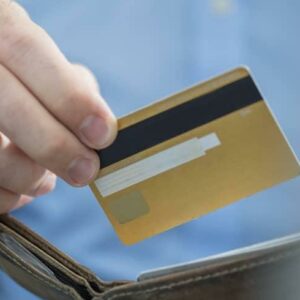What is the difference between a paper paycheck and a plastic paycheck?
Both can be handed out on payday. Both can be brought to the bank and cashed. The biggest difference is that the plastic paycheck can be refilled automatically each payday without the hassle of picking up a physical check while a paper paycheck is, well, a paper paycheck.
Today, the vast majority of employees are paid by direct deposit. However, those without bank accounts are often denied the efficiencies of modern payment systems.
We are living in a new era of payment. Even folks my age are more likely to pay for their groceries with a smartphone app than they are to carry around a checkbook. While pay cards are not exactly new technology – they have been around for several years – they are part of a wider effort to modernize the payday process to make it more efficient for both employer and employee.
SB 209 was introduced into the state legislature this year to bring us one step closer by eliminating the inefficiencies related to requiring paper paychecks. Unfortunately, while the public is quick to adjust to these technologies and payment methods because they make our lives easier, public policymakers and state laws are not as quick to adapt.
In a recent hearing on this bill, several committee members, many of my generation, seemed to have trouble conceptualizing that new technology could be used as a check for wages. There was wide confusion that technology exists allowing the same plastic paychecks to be refilled without having to come to the office.
Opponents of the bill argued that “a worker has the right to their pay and it should be given to them in the easiest, most secure way possible.” I couldn’t agree more.
A paper paycheck must be either picked up at the company office or if an employee works from home, placed in the snail mail. Asking an employee to stop by the office or wait for the USPS is certainly not a faster method of distribution. As far security – have you ever had a package lost in the mail?
Pay cards work a lot like debit cards. When you are hired, a personal card is issued to you. On payday, your pay card is electronically filled with your pay. And like a paper check, you can take it to the bank to cash it if you like.
The advantages of a pay card are immense. Working late on a remote site? No need to worry about how to get back through rush hour traffic to get your check before the office closes. Leaving for a long weekend before payday? Your card is refilled with your pay when you arrive at your destination.
Some have suggested that the possibility of an employee losing their pay card outweighs the benefits. However, even paper checks can be lost and debit cards can be left at restaurants or bars. That doesn’t invalidate their balance, nor would losing a pay card invalidate the balance on the card.
We can’t let hesitancy to new technology stop progress. And we shouldn’t let every possible doomsday scenario scare us away from giving employees and employers a tool to modernize our payday process. But, if you’re still unconvinced about the security of a pay card – here’s a simple test. Take a paper check and a plastic pay card and insert them in the washing machine. Do a light load short cycle. Remove both. Go to the bank and see which one you can still cash.





